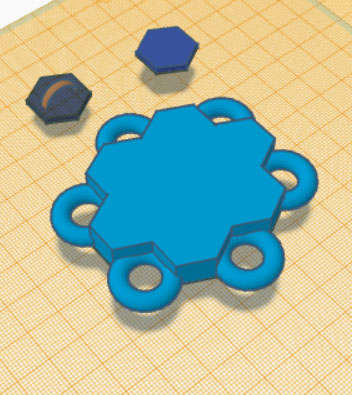
Charles Darwin once named the beehive a master of engineering and “absolutely perfect in economizing labor and wax.” A mathematical rationale was given by Polish polymath, Jan Brożek (1585–1652): The hexagon tiles the plane with minimal boundary. Stated another way, Brożek conjectured that the optimal way to cover a large region with shapes of the same area while minimizing the boundary is to use the hexagonal structure. Therefore the best storage container is a hexagon, the polygonal structure that maximizes space. The hive would be one giant hexagon but would be separated into smaller hexagons. The individual hexagons would be easily reachable and organizable since the crew would be able to separate the comb into sections. Glued onto the inside side of the ISS, the hexagonal space stores finite items such as food and trash. The astronauts can use the leftover empty container as a “space trash can.” Handles will be tetherable so tools can be easily attached to the containers.
Download File
Download File
Contact us
Thank you for your interest in contacting Future Engineers. We look forward to connecting with you!
General Inquiries
support@futureengineers.orgSponsorship Inquiries
sponsor@futureengineers.org